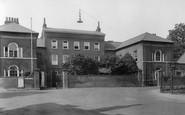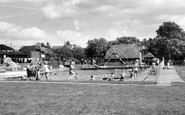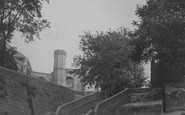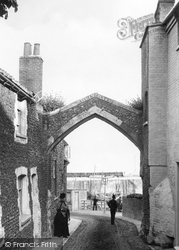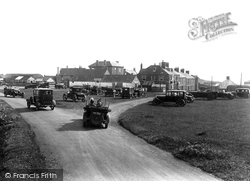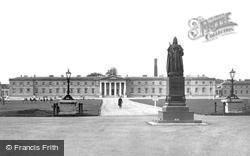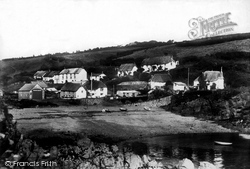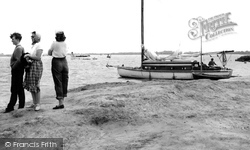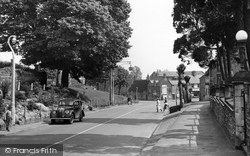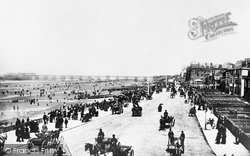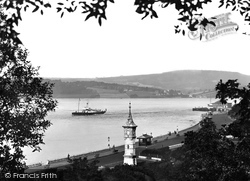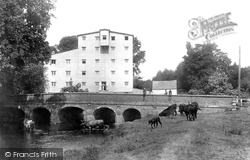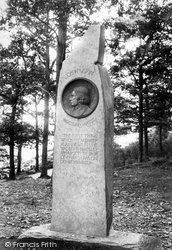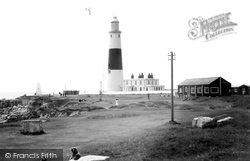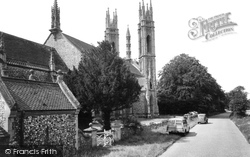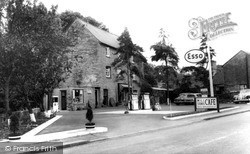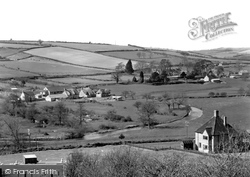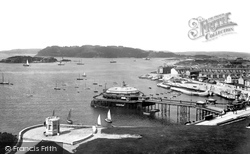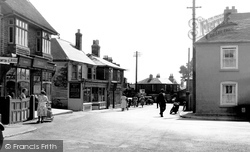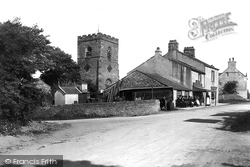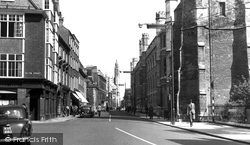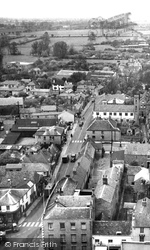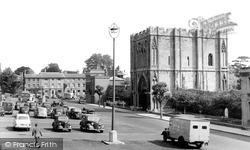Places
18 places found.
Those places high-lighted have photos. All locations may have maps, books and memories.
- Hythe, Kent
- Hythe, Hampshire
- Small Hythe, Kent
- Bablock Hythe, Oxfordshire
- Methwold Hythe, Norfolk
- Hythe, Somerset
- Hythe, Surrey
- Hythe End, Berkshire
- The Hythe, Essex
- Egham Hythe, Surrey
- West Hythe, Kent
- New Hythe, Kent
- Broad Street, Kent (near Hythe)
- Horn Street, Kent (near Hythe)
- Newbarn, Kent (near Hythe)
- Newington, Kent (near Hythe)
- Broad Street, Kent (near Hythe)
- Stone Hill, Kent (near Hythe)
Photos
360 photos found. Showing results 781 to 360.
Maps
101 maps found.
Books
10 books found. Showing results 937 to 10.
Memories
4,406 memories found. Showing results 391 to 400.
My Memories Of Mossband
I lived with my parents at 28 The Green, Mossband from around 1942 (when I was one year old) until 1949, when my Father, Edward Lovie (a WD constable) died from throat cancer. My memories are all fairly traumatic and ...Read more
A memory of Mossband Ho in 1940 by
A Wartime Child
I was born in 1935 at 25 Cambridge Road, maiden name Lee. There were six of us, parents, 2 older sisters, Beryl and Gwen, and grandmother. I remember many of the shops from the late 30's to the early 50's when we moved to ...Read more
A memory of North Harrow in 1930 by
Stubbington 1956 1968
Thank you Lorraine for the many memories you brought back. I lived in Queens Crescent from when I was born in 1956 until I moved to Australia in 1968. I also remember the bakery on the corner of the lane by the school ...Read more
A memory of Stubbington in 1962 by
2up And 2down!
My father was born in Ford Street Hockley Brook Birmingham in 1936. He was the youngest of 6, 2 sisters and 3 brothers. Ford Street consisted of a row of houses on one side and factories on the other side. The houses were 2 up ...Read more
A memory of Birmingham in 1940 by
My Youth
I lived in Tamar Drive and went to the local school, my senior school was Lennards Comprehensive. My best mates were Jenny Cutler, Shirley Jassec, Pat Madder. We spent alot of time roaming the streets, I remember the fair coming to town ...Read more
A memory of Aveley in 1960 by
Leaving Ware Grammar School
My elder sister and I both went to Ware Grammar School. My sister Christine Beattie from 1953 to 1956 and me, Catherine (Rena) Beattie from 1955 to 1956. We travelled from Hertford by bus to school and back. We left the ...Read more
A memory of Ware in 1956 by
Peartree Close
I was born in Burgess Hill in 1955 and lived at 18 Peartree Close. There was a rough track behind the house with rear access to garages, and we spent loads of time playing up and down this track and in the woods beyond. I ...Read more
A memory of Burgess Hill in 1955 by
Life At Avon Carrow For A Yank Abroad
I moved into Avon Carrow in the Spring of 1970. I was stationed at RAF Croughton but moved my family to this small village in Warwickshire because that life was what we were used to, coming from the ...Read more
A memory of Avon Dassett by
A Ghost On Beccles Church Steps
My father, Stafford Brown, was a student at Beccles College during the First World War. He stayed with the Knights family of Puddingmoor. Mr Knights, who was a wherryman, told of a strange event that happened to him ...Read more
A memory of Beccles in 1910 by
Vague Memories
I lived in Tetney for about the first 5 years of my life. I vaguely remember going to school and walking a long way home. I can't remember the name of the road, but the house I lived in was called 'Mistletoe Cottage'. As far as I ...Read more
A memory of Tetney in 1940 by
Captions
4,899 captions found. Showing results 937 to 960.
It was traditionally much more important than its 'little suburb by the sea', and was included in the jurisdiction of the Cinque Ports.
The closest the railway ever reached to Britain's most southerly spot was Helston, eleven miles away, so visitors had either to come by car or take one of the excursion buses which were run from 1903 by the
It passed through several owners before being bought by the Grammar School for £187 in 1887. The school stayed here until 1972, when it moved to its present site.
Kings Walk leads us back to the exit, past the Victoria Statue unveiled in 1904 by the Duke of Connaught, after being erected by cadets and others who had connections with the College.
Coastal vessels docked here to take on stone from the quarries at St Keverne close by. The small chippings were used for metalling roads.
The date, 1965, is clearly reflected by the clothes of bystanders - early, baggy jeans and headscarves.
Earls Barton is surrounded by the lush countryside of the Nene valley, making it popular with house hunters.
By the 1870s, many Lancashire cotton workers received three day's unpaid holiday a year, which was tacked onto a weekend to give a five-day break.
By the time this picture was taken, the holiday business was well established. The high ground in the distance is the edge of Dartmoor.
The name Sturry means 'Stour-y', on or by the Stour. The settlement may date back to the earliest Saxon arrivals in Britain.
This is another of the Lake District's classic viewpoints, the backdrop formed by the peak of Causey Pike (2,035 ft).
The spa could also be reached from Avonmouth by the trains of the BP&PR, whose terminus can be seen on the extreme left of the picture.
By the beginning of the last century, the island was famous for its great naval harbour, its prison, and the stone quarries that produced the fine Portland stone.
This is a comparatively modern building - it was built between 1875 and 1900 by the Rev Whitewell Elwin.
The Pavilion has now been demolished, to be replaced by the Lakeside Arts Centre.
The name of this café, and the two grinding stones from the mill that lean by the doorway, explain the changing nature of the countryside in these decades.
It was extensively remodelled during the 19th century by the architect William Burn; it had previously been modernised between 1768 and 1788 by John Carr of York.
It is a pleasant old Saxon village, almost overlooked by the passage of time.
The building by the little harbour was for many years the home of the Royal Western Yacht Club and is now the Waterfront Restaurant.
The whole area was taken into the Forest by the Conqueror, though it was released for farmland in later centuries.
Set up by the photographer, the group outside the Inn display a range of 19th-century garb: long skirts, long white aprons, and bowler, boater and trilby hats. Was that their Sunday best?
The traffic is now diverted down Silver Street (left), and the street lights have been replaced by the modern Richardson Candles.
The two ambulances (centre), identified by the crosses on their roofs, are probably en route from the Royal Air Force Hospital in Lynn Road.
The abbey gate replaced a Norman gate destroyed by the townspeople in 1327, who then had to pay for this castle-like defensive structure.
Places (18)
Photos (360)
Memories (4406)
Books (10)
Maps (101)

